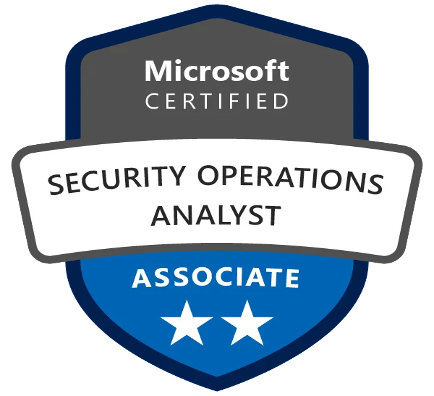My 6-Week Journey to Passing the SC-200: A Focused Path to Becoming a Microsoft Security Operations Analyst
- Sarthak Thakur
- Jul 29
- 3 min read
The journey to becoming a certified Microsoft Security Operations Analyst (SC-200) was a rewarding experience that pushed my technical limits, deepened my understanding of cloud security, and significantly sharpened my threat detection and response skills. Over a focused span of 1.5 months, I committed to preparing for this exam — and I’m proud to share that I passed it on my first attempt.
If you’re planning to take SC-200, or just curious about the process, I’d like to walk you through my preparation journey, resources, challenges, and key takeaways.
📌 Why I Chose SC-200
With the rise of cloud-native environments and hybrid infrastructures, the demand for skilled security professionals is higher than ever. I wanted to gain a strong foothold in Microsoft’s security ecosystem, particularly in tools like Microsoft Sentinel, Microsoft Defender XDR, and Microsoft Defender for Cloud.
SC-200 was the perfect exam to validate both my theoretical knowledge and practical skills in these areas.
🎯 Key Skill Areas Covered
Manage a security operations environment (20–25%)
Configure protections and detections (15–20%)
Manage incident response (25–30%)
Manage security threats (15–20%)
🗓️ Study Timeline: 6-Week Breakdown
Week 1-2: Foundation Building
Reviewed the Microsoft Learn Learning Paths for SC-200:
Focused on understanding SIEM and XDR concepts.
Began hands-on labs in Microsoft Sentinel using the free Azure trial.
Week 3-4: Deep Dive + Practical Labs
Spent time building KQL (Kusto Query Language) queries in Log Analytics.
Practiced using Defender for Endpoint and Defender for Identity through Microsoft Virtual Labs.
Used the SC-200 Practice Tests on platforms like MeasureUp, itexams, certlilibary and Whizlabs.
Took notes and created mind maps to retain key concepts (like MITRE ATT&CK mappings, connectors, incident handling processes, etc.).
Week 5: Mock Exams and Weak Area Review
Took full-length timed practice exams.
Reviewed every wrong answer to understand the “why,” not just the “what.”
Focused especially on Sentinel analytics rules, workbooks, automation rules, and the logic behind response playbooks.
Week 6: Final Polishing
Revisited Microsoft Learn modules for tricky topics.
Reviewed scenario-based questions reflecting real-world security challenges.
Rested well before the exam.
🧠 Key Lessons and Tips
Hands-On Practice is a Must
Reading alone won’t cut it. Real learning happened when I built workbooks, configured alerts, or ran KQL queries.
KQL is Vital
SC-200 expects you to read and interpret KQL, if not write it. Focus on joins, summarize, where filters, and parsing logic.
Understand the Tools, Don’t Just Memorize
Know how Microsoft Sentinel integrates with data sources, how incidents are generated, and what actions are triggered — this conceptual clarity is key.
Use Microsoft Learn as Your Base
It’s free, comprehensive, and aligns well with the exam objectives.
Practice Exams Are Your Mirror
I didn’t aim for perfection in mock tests but used them to identify gaps. Each mistake taught me more than a correct answer ever could.
🎯 The Exam Experience
The exam itself was scenario-based and realistic. I encountered a mix of:
KQL-based queries
Microsoft Sentinel architecture and use cases
Threat detection and response scenarios
Defender for Cloud configurations and recommendations
Having practical experience truly made the difference in confidently answering the questions.
🙌 Final Thoughts
The SC-200 journey wasn’t easy — it required discipline, hands-on work, and a genuine curiosity to understand Microsoft’s security tools. But it was worth every hour invested. If you’re preparing for this certification, stay consistent, stay curious, and don’t just aim to pass — aim to master the mindset of a Security Operations Analyst.





Comments